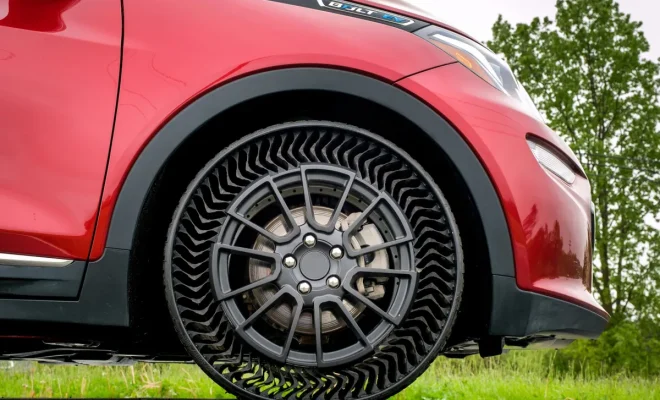sAirless tires: Why you’ll want this game-changing technology

Introduction
The automobile industry is experiencing a massive shift, with game-changing technologies continually emerging to improve the driving experience. We’ve seen electric cars become increasingly popular and self-driving features being adopted by various manufacturers. One such development that is poised to revolutionize the way we drive is the airless tire.
Airless tires, also known as non-pneumatic tires or run-flat tires, are manufactured without any air, instead relying on resilient materials to maintain their structure. This groundbreaking technology has gained a lot of attention for its potential advantages over traditional pneumatic tires. In this article, we’ll delve into the world of airless tires and explore why you’ll want this innovative addition to your vehicle.
1. Puncture-Proof
The most significant advantage that airless tires offer over conventional ones is the elimination of punctures and flats. Without any air to lose, these wheels cannot suffer a typical blowout or deflate from a puncture. This benefit translates into more extended tire life and far fewer situations where motorists are left stranded due to tire troubles.
2. Enhanced Safety
Another crucial benefit of using airless tires is that they can significantly improve safety levels on the road. Traditional pneumatic tires may suddenly deflate in case of a puncture, leading to loss of vehicle control. In stark contrast, airless tires can maintain their structural integrity even if damaged, enabling drivers to maintain better control over their cars in case of unforeseen tire damage.
3. Reduced Environmental Footprint
Manufacturing air-filled rubber tires involves cutting down large volumes of natural resources and often produces hazardous emissions due to vulcanization processes used in their production. On the other hand, the production techniques for making airless tires are cleaner and consume fewer resources overall, making them environmentally friendly.
4. Improved Fuel Efficiency
Because the elasticity in airless tires is derived from the material itself, they are better at managing rolling resistance than air-filled tires. An improvement in rolling resistance translates to substantially increased fuel efficiency, which can lead to significant savings over a vehicle’s lifetime and play a vital role in reducing the environmental impact of automobiles.
5. Low Maintenance
Flat tires and under or over-inflation complications are common issues drivers face with traditional air-filled tires. With airless tires, drivers won’t have to worry about maintaining optimum tire pressure since there is no air involved. This advantage can save drivers both time and money on maintenance costs.
Conclusion
Airless tire technology is poised to become the future of the automobile industry, offering substantial benefits over traditional pneumatic tires. In an age where safety, environmental conservation, and efficiency reign supreme, the introduction of airless tires will help bring vehicles one step closer to improved performance and sustainability.
Undoubtedly, as research and development of this game-changing technology advance, we can expect to see increased adoption in mainstream vehicle production lines worldwide. Get ready for a future where flat tires are relics of the past and enjoy the numerous benefits that airless tires bring to your driving experience!






